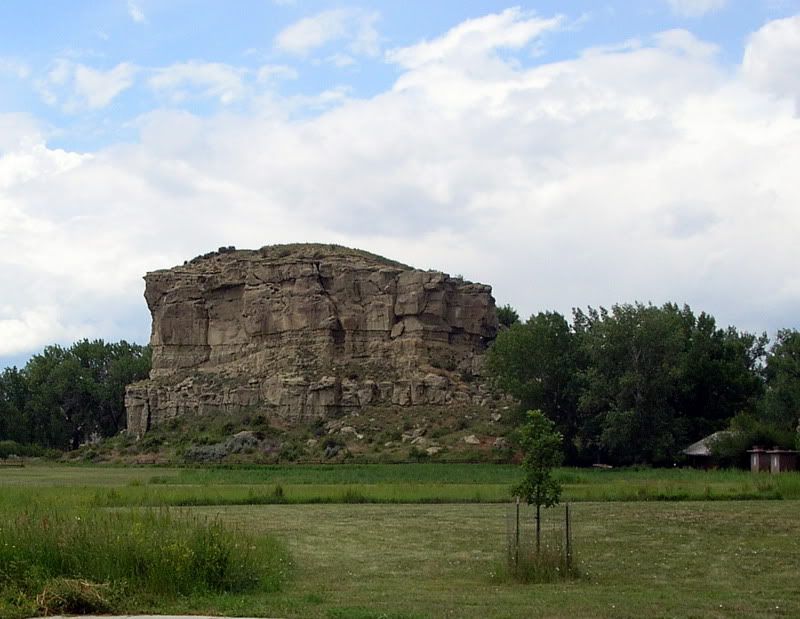Pompey's Pillar is located in south central Montana, not far from Billings. It's notable in part because of graffito left by a early visitor. William Clark, co-leader of the Lewis and Clark Expedition, carved his name and the date 1806 on the monument. This is the only physical evidence remaining to localize where their expedition had visited.
Others have left their graffito, but none as famous as him.

An interesting land feature. Reminds me of Devil's Tower in WY.
ReplyDeleteDid you take this picture? It would have been cool to see a close up of the actual etching.
ReplyDeleteI'd be curious to know how it got its name. Was it named for the Pompey of Imperial Roman history, or for lesser Pompey (Fred? Stan?) who happened by and was the first to pick a name? Do you know?
ReplyDeleteBilbo, I found this explanation:
ReplyDeleteIn his journals, Clark named the Pillar "Pomp’s Tower." Pomp was Clark’s nickname for young Baptiste Charbonneau, infant son of Sacagawea, the Shoshoni woman who accompanied the expedition and contributed greatly to its success. An image of Sacagawea carrying young Pompy adorns the United States golden dollar coin. Pompy means little chief in the Shoshoni language. The name was changed to Pompeys Pillar when an account of the Expedition was published by Nicolas Biddle in 1814.
Thanks for the information; it was very interesting! Now I have a bit of trivia to amaze my friends and make money in bar bets ... who else on earth knows the nickname of the baby on the Sacagawea dollar coin?
DeleteWe are at opposite ends of the expedition.
ReplyDelete